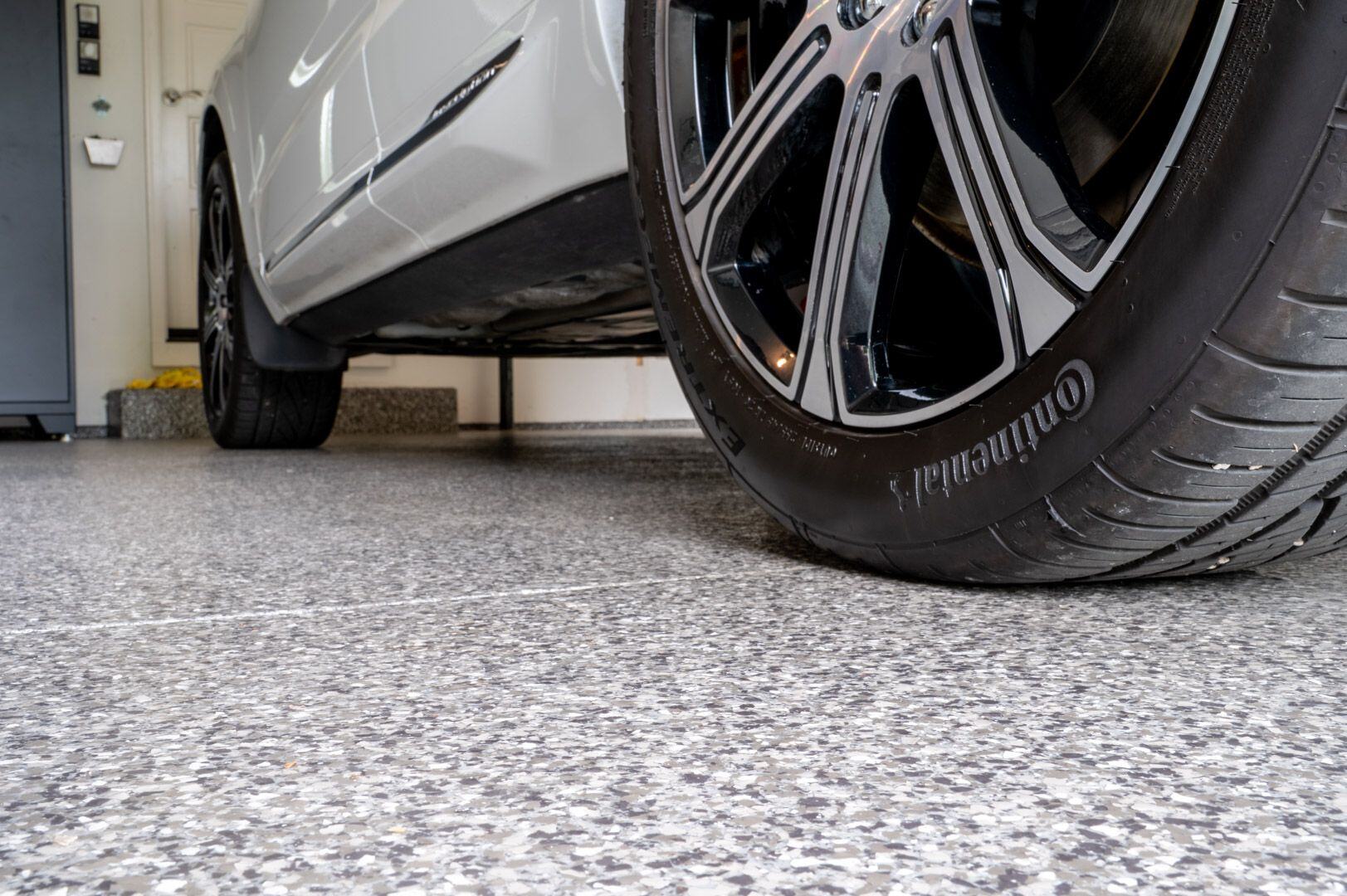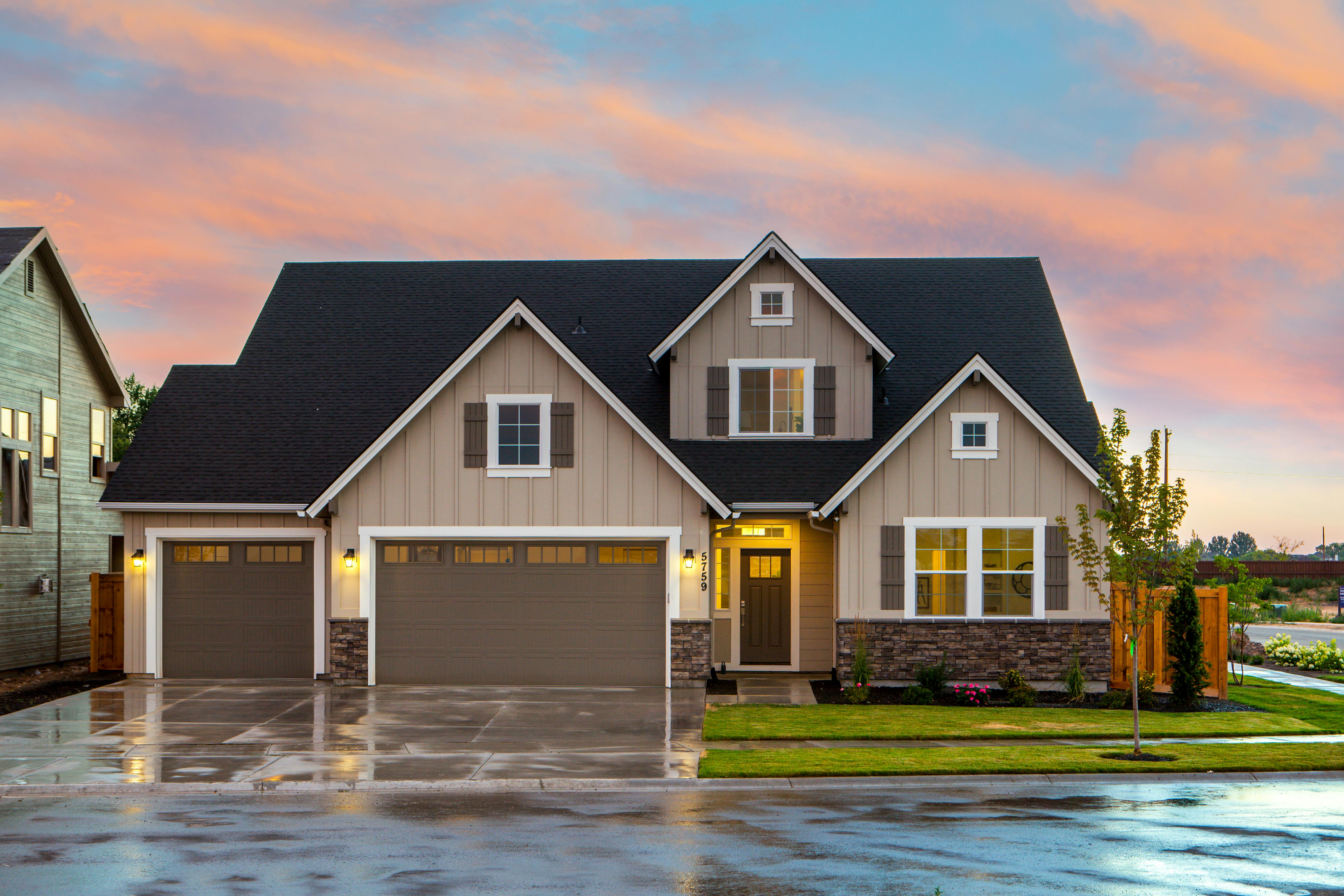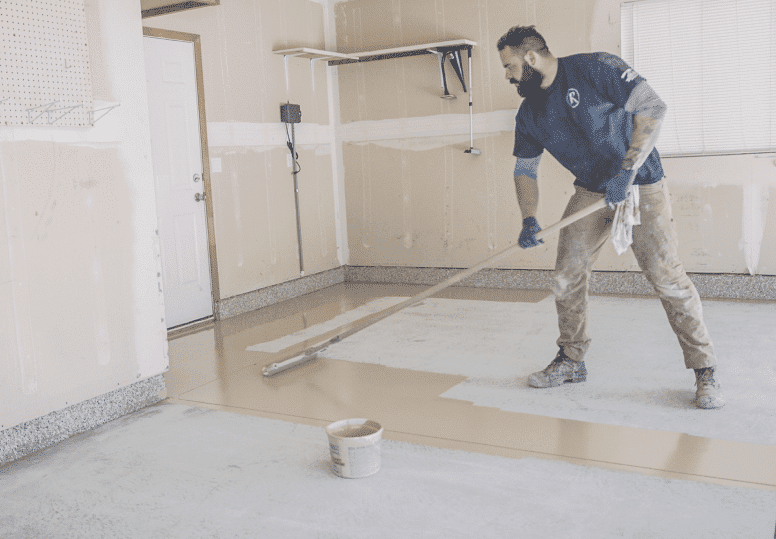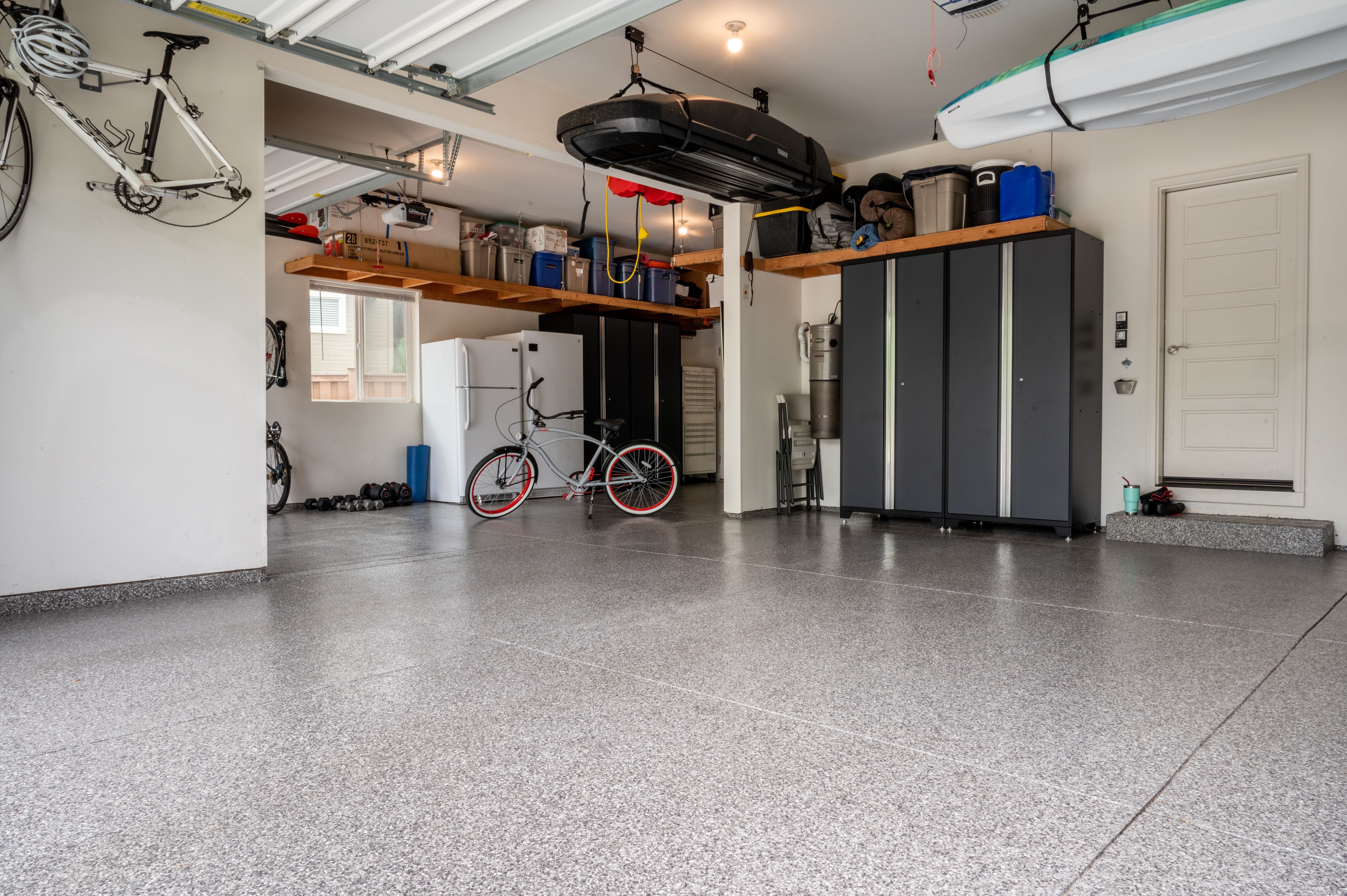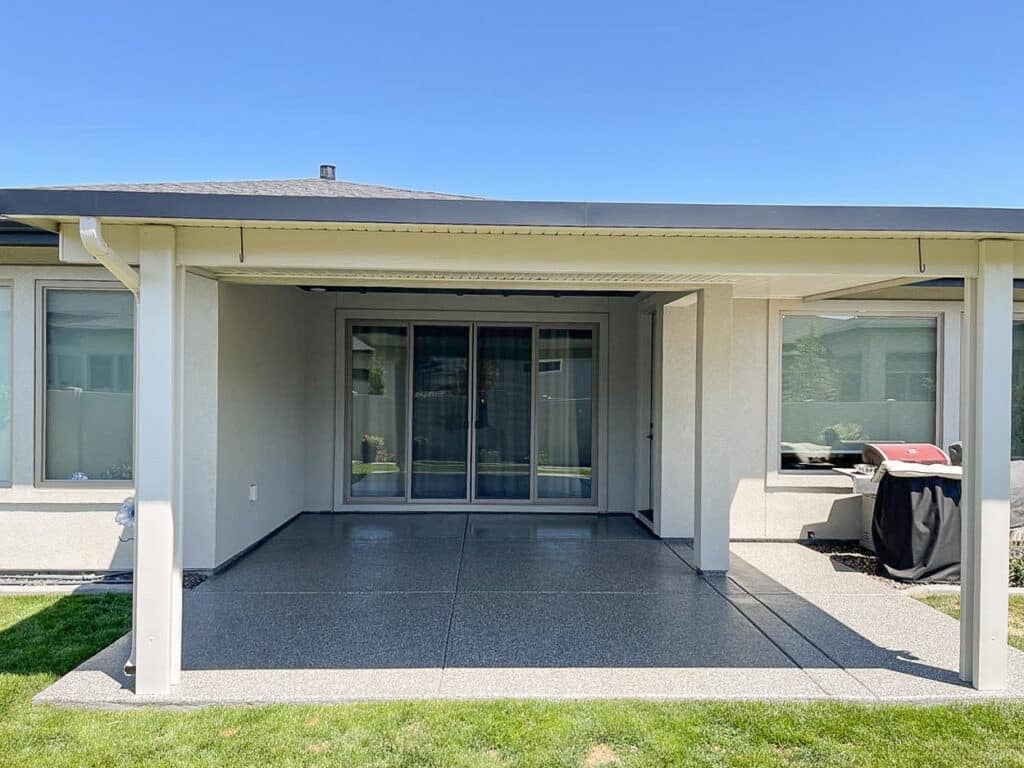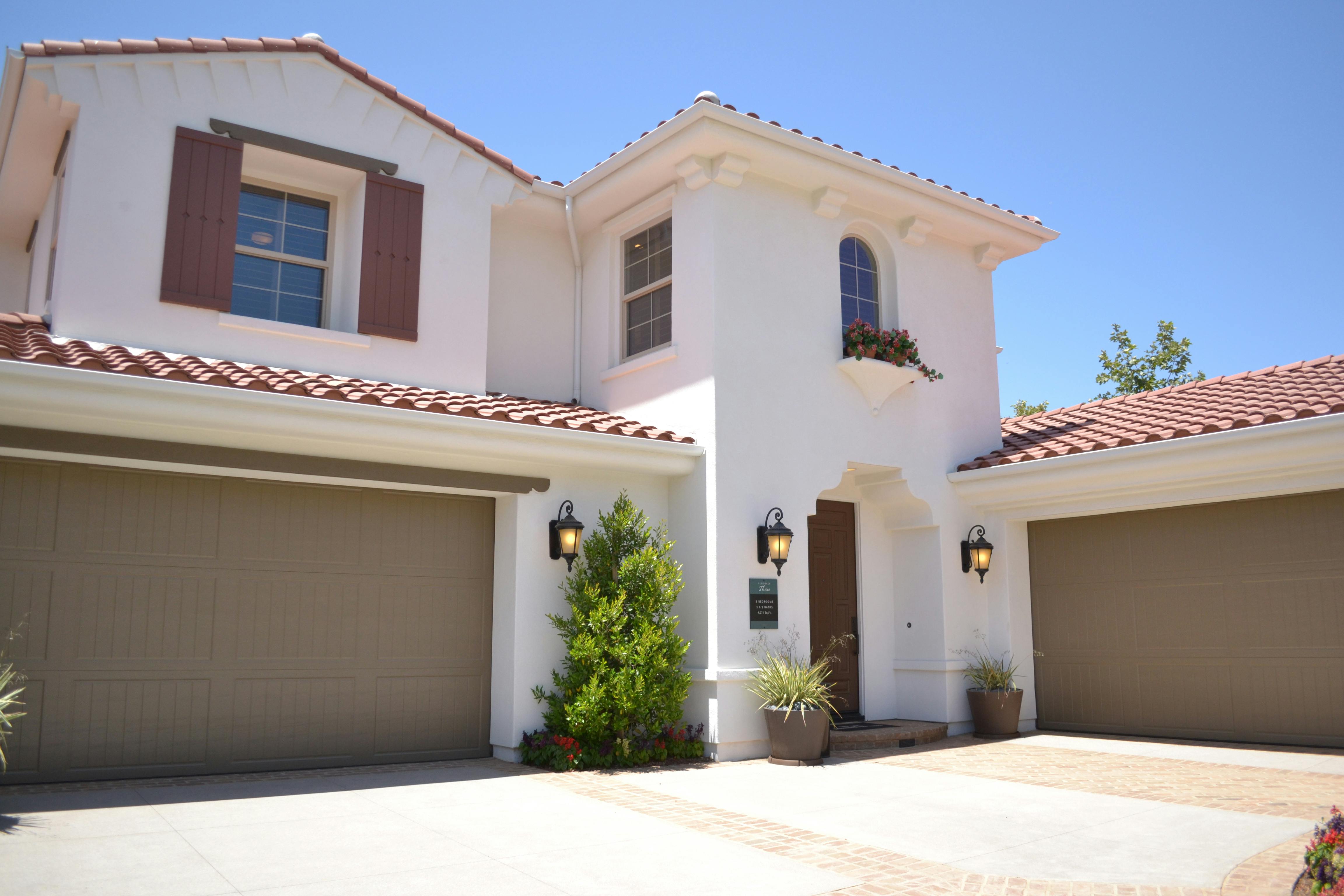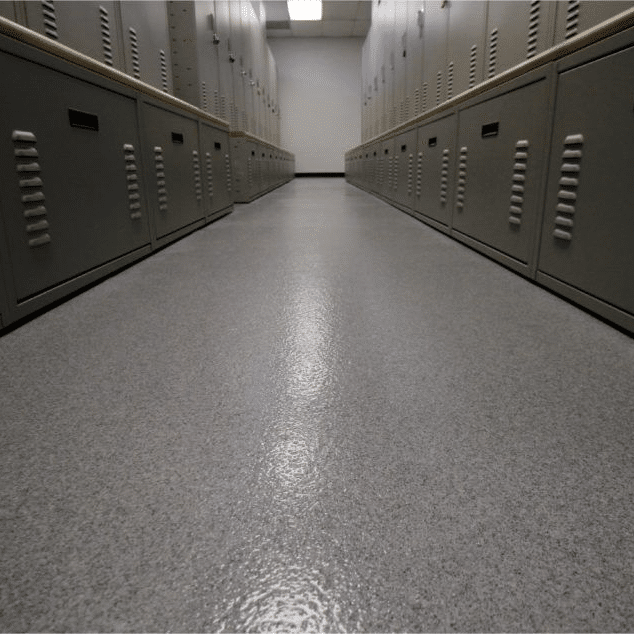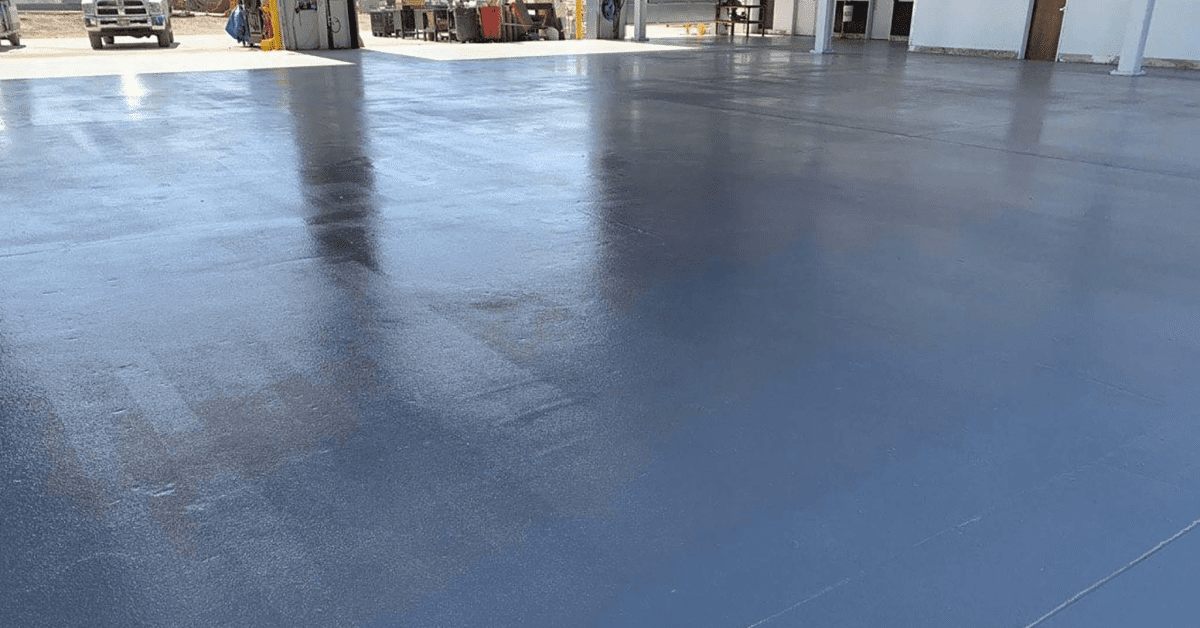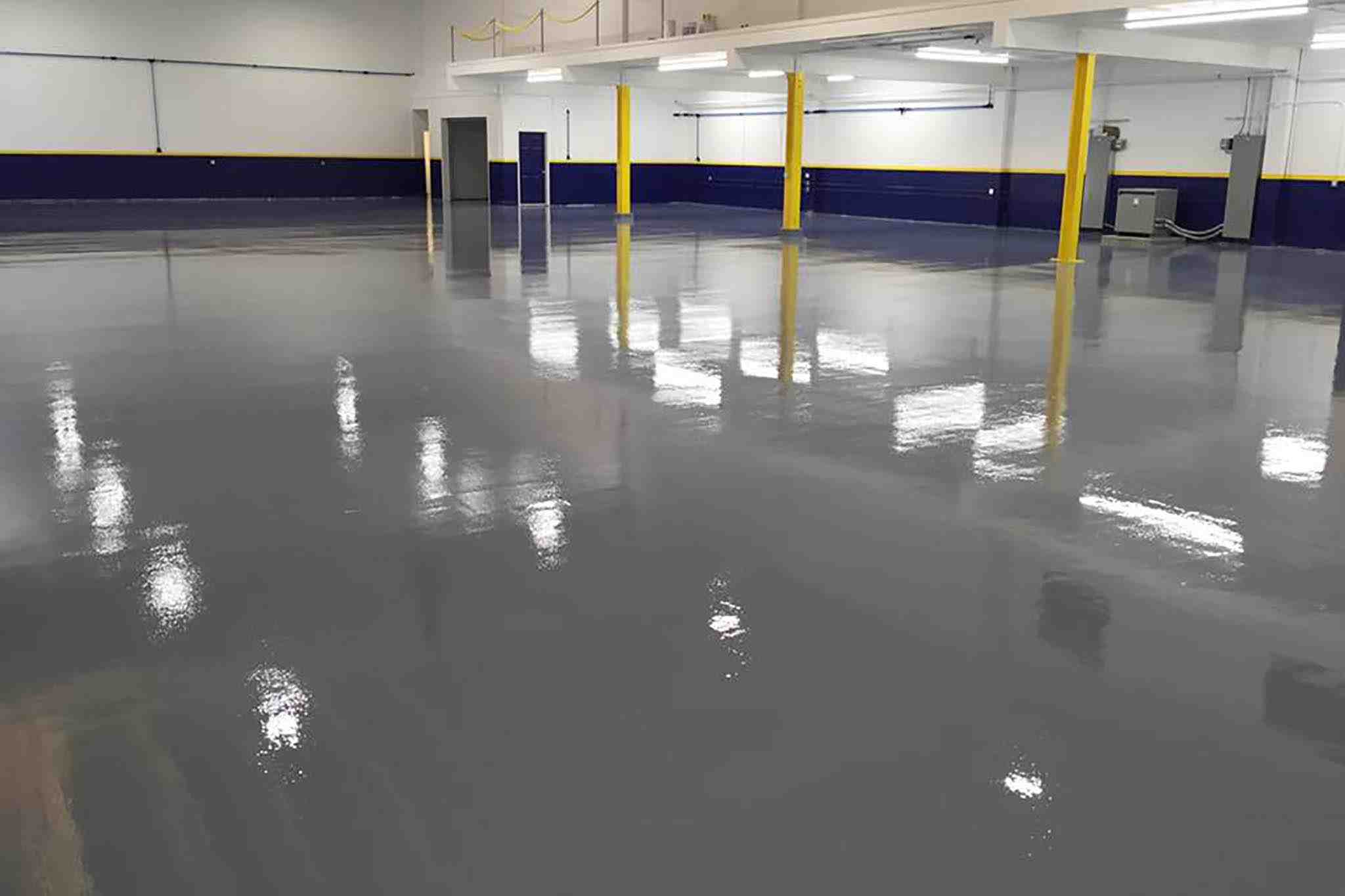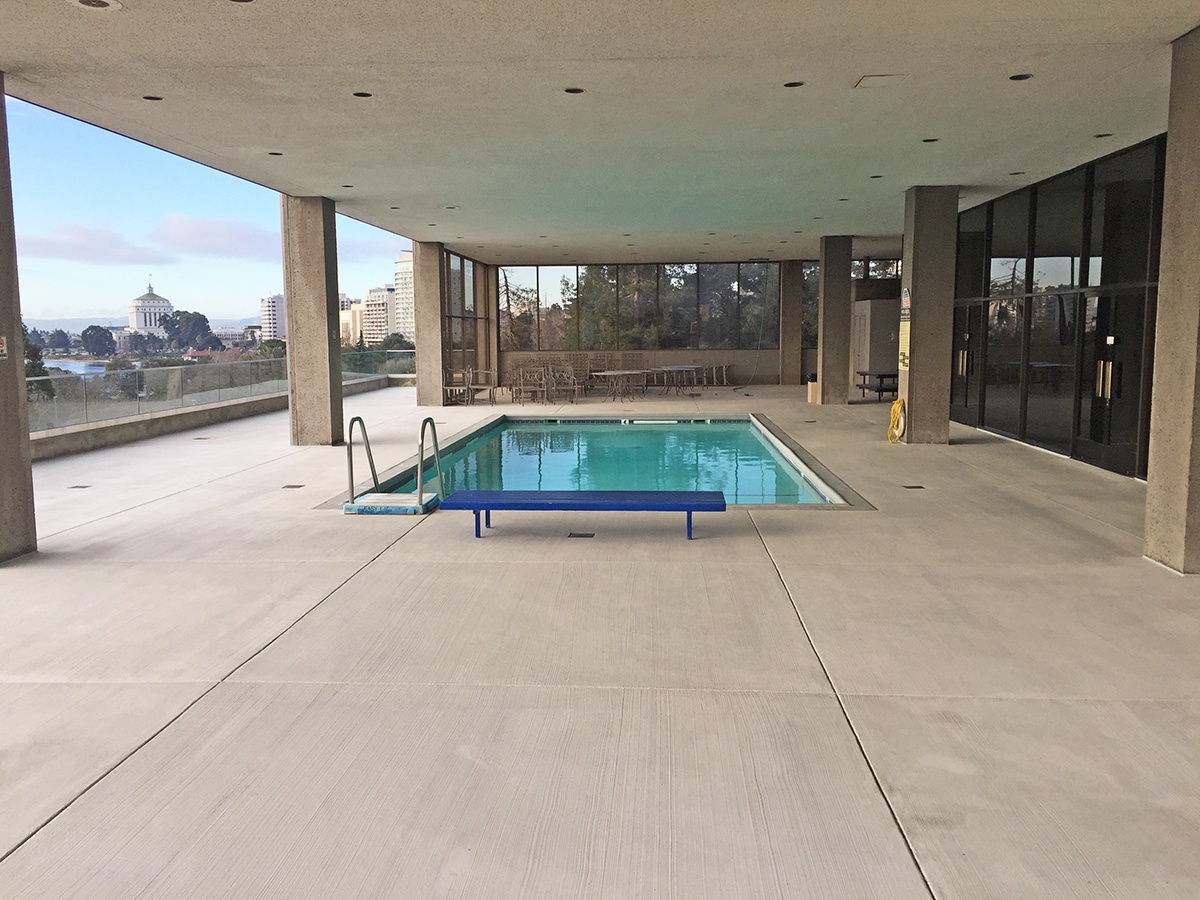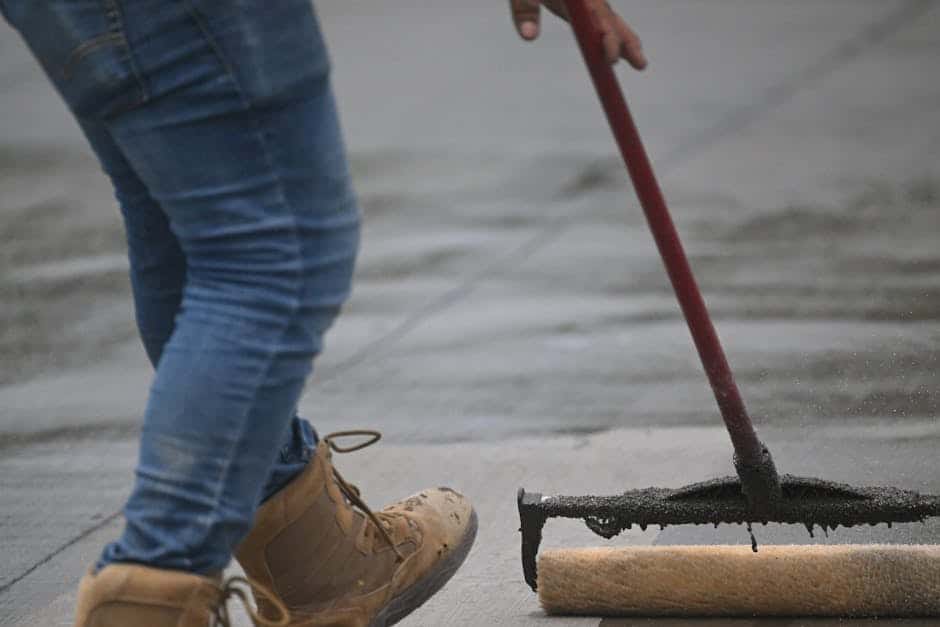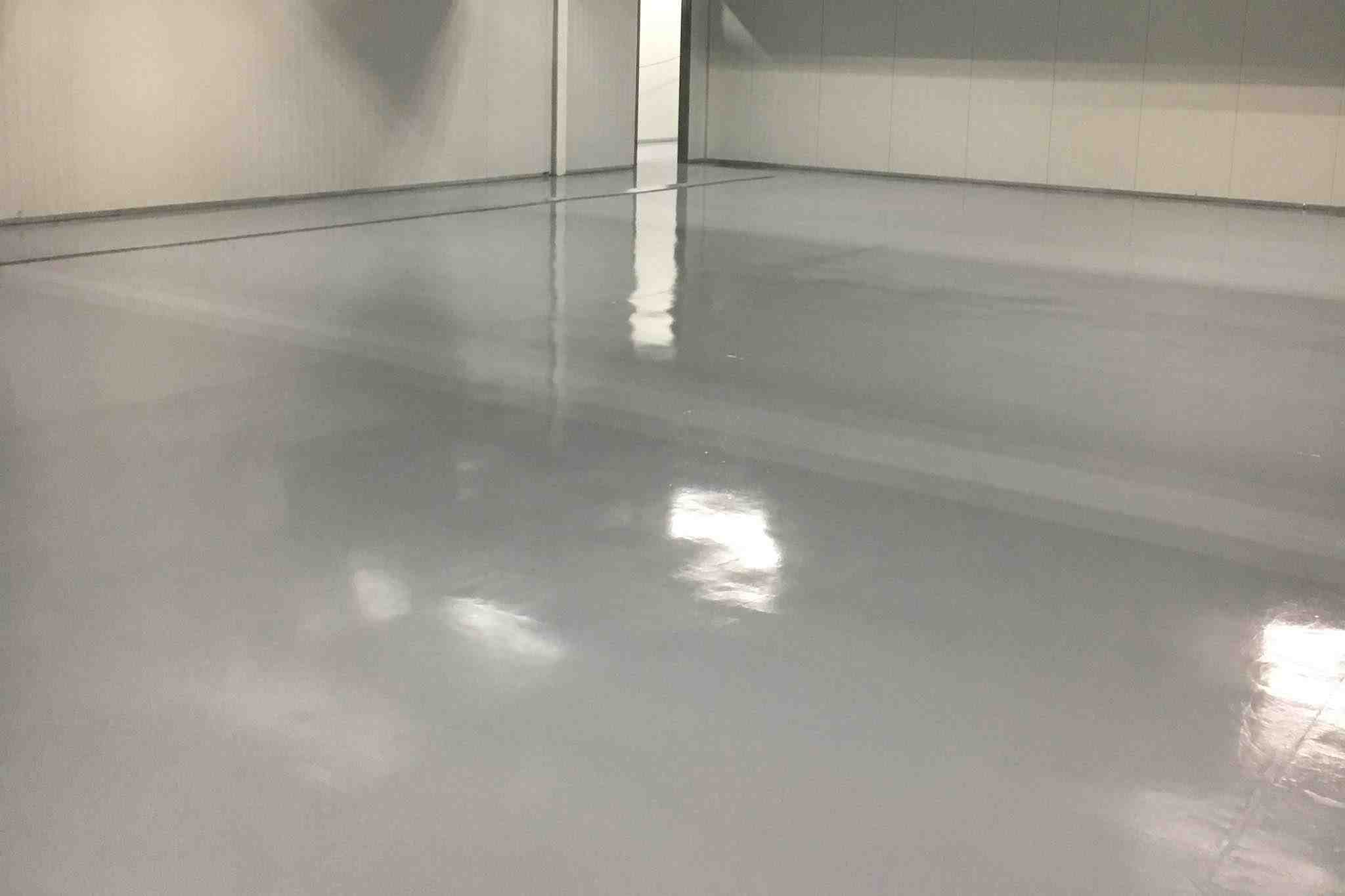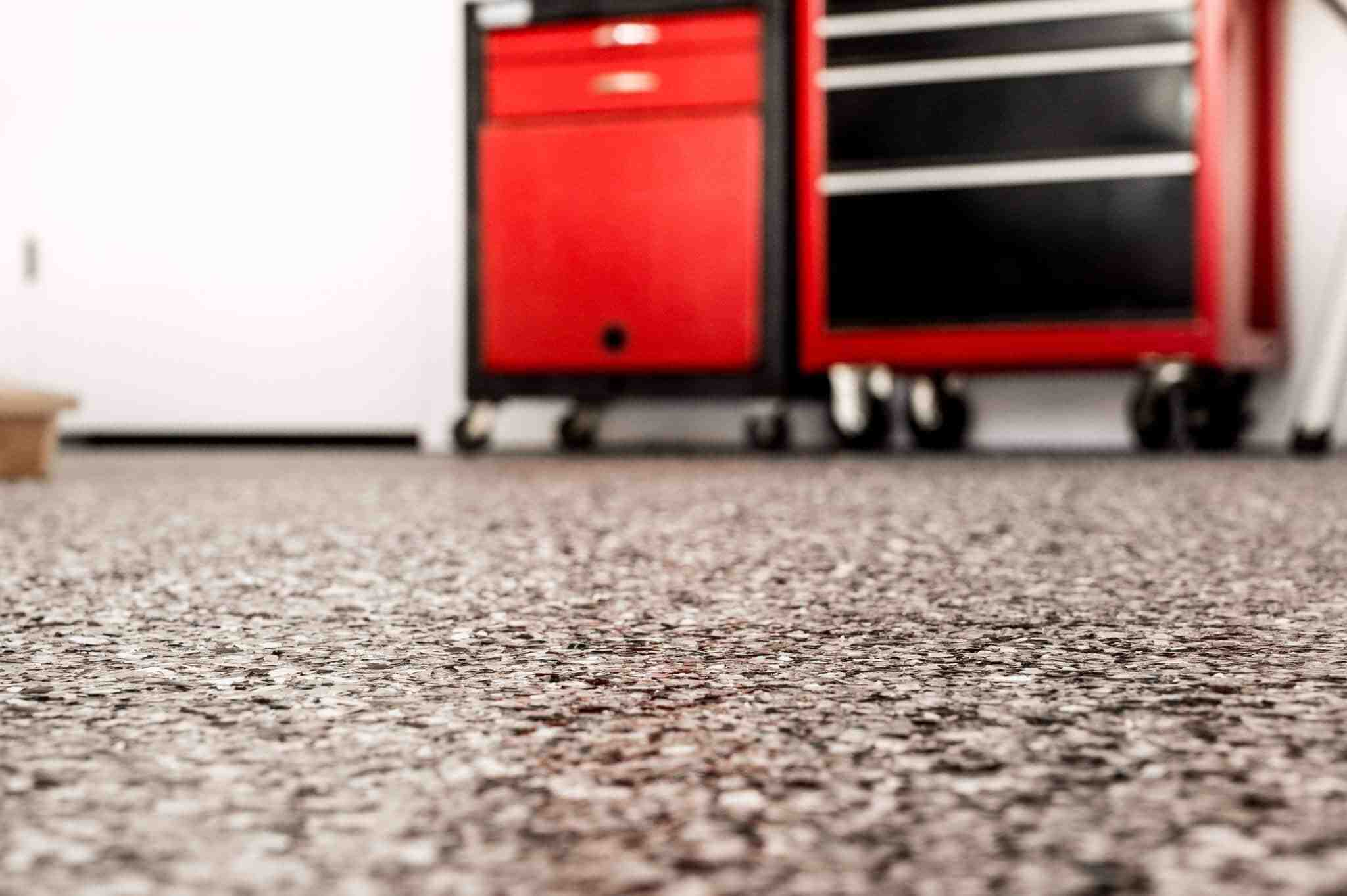Concrete Paint vs. Concrete Coatings: What's Best for Your Driveway?
June 23rd, 2025
6 min read
By Jud Masters
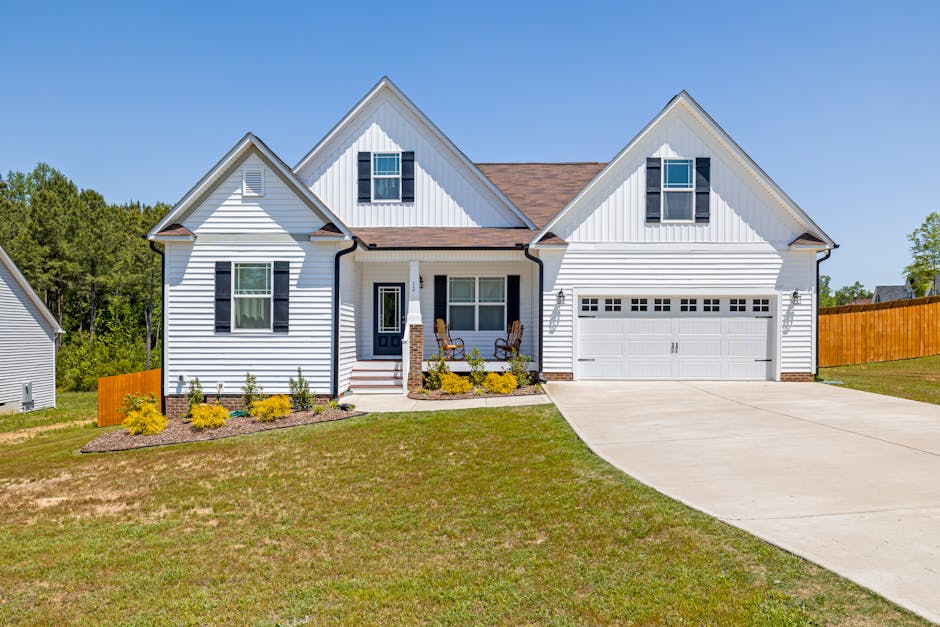
Thinking about painting your concrete driveway? You may have seen a few DIY videos or picked up a can labeled “concrete paint” at the hardware store. The problem? Paint isn’t made to stick to driveways. It will quickly fail under the pressure of hot tires, freeze-thaw cycles, or extreme weather conditions. What starts as a curb appeal upgrade often turns into peeling, flaking, and costly do-overs within months.
At Roe Painting, we’ve helped thousands of homeowners avoid these setbacks by using professional-grade concrete coatings, not paint. From invisible penetrating sealers to decorative flake systems, we know which solutions actually protect your driveway and which ones just mask the problem.
In this article, you’ll learn the real difference between driveway paint and concrete coatings, why coatings are the only long-term solutions, and which options deliver both durability and style. By the end, you’ll know exactly what to avoid and what to ask for instead.
What Concrete Paint Is (And Isn’t)
When your driveway, patios, or walkways start to look discolored, stained, or just plain tired, it’s natural to start searching for something like “concrete driveway paint.” It makes sense. If you can paint a vertical surface like a wall, why not your concrete? You’ll even find products labeled just that.
But here’s the truth that most homeowners don’t hear until it’s too late:
“Concrete paint” isn’t made for driveways, and it’s not a long-term solution.
Paint is a surface-level product. It sits on top of the concrete and can add color temporarily, but it isn’t designed to bond with the surface or hold up under the stress of:
- Hot tires
- Heavy vehicle weight
- Freeze-thaw cycles
- Road salt or de-icing chemicals
Even the most “durable” concrete paints tend to flake, peel, and fade within one or two seasons. That’s because driveways need more than color. They need protection.
So, what should you use instead?
Concrete coatings are a different category entirely. These are professional-grade materials that bond chemically with the concrete to create a finish that’s stronger, longer-lasting, and better-looking than paint.
Some coatings can be pigmented to restore or change color. Others stay invisible while providing serious protection against moisture, salt, and surface wear. In the next section, we’ll walk through the main types of coatings and help you understand which ones make the most sense for your driveway.
What to Use Instead of Concrete Paint: Concrete Coatings
When paint fails, the right solution isn’t a better brand of paint. It’s switching to a completely different approach. Concrete coatings are specifically engineered to handle the demands of driveways: weather, water, and wear.
Unlike paint, which sits on the surface and peels under pressure, coatings chemically bond to the concrete or soak in below the surface, providing lasting protection, optional color, and even texture.
Here are the most common types of concrete coatings, how they work, and when each makes the most sense.
1. Penetrating Sealers
These sealers soak into the concrete and form a protective barrier below the surface. They won’t change the appearance of your driveway, but are ideal for preserving its natural look while minimizing water, salt, and freeze-thaw damage.
Best for: Driveways, walkways, or patios in colder climates or those prone to cracking, moisture intrusion, or spalling.
Key Benefit: Invisible protection with zero peeling.
Drawback: No color enhancement or decorative effect, needs periodic reapplication.
2. Topical Sealers
Topical sealers form a thin film on the surface. Some are clear, while others are tinted. They can provide a light sheen and minor enhancement of the surface’s existing tone.
Best for: Mild climates or homeowners wanting a subtle gloss.
Key Benefit: Easy to apply and reapply.
Drawback: Lower durability and may wear unevenly in high-traffic areas.
3. Epoxy Coatings
Epoxy is a thick, resin-based system that creates a hard, glossy finish. It’s more commonly used indoors (like in garages), but it's occasionally used on driveways where conditions allow.
Best for: Low sun or covered areas.
Key Benefit: Smooth, durable surface.
Drawback: Can yellow in UV exposure and become slick when wet. Must be paired with a UV-resistant topcoat like polyaspartic or polyurethane for outdoor applications.
4. Polyaspartic Coatings
Polyaspartic coatings cure quickly and are UV stable, making them ideal for outdoor use. They can be applied in a wide range of temperatures and offer a strong, clear, or colored finish.
Best for: Homeowners who want fast turnaround and color options.
Key Benefit: Excellent durability and fast drying time.
Drawback: Higher material cost than epoxy or sealers.

5. Polyurea Coatings
Polyurea is a professional-grade, high-performance coating known for its flexibility and extreme durability. It resists cracking, salt damage, and chemicals, making it a popular choice for harsh climates and high-use surfaces.
Best For: High-traffic driveways or areas with extreme weather.
Key Benefit: Longest lifespan and high overall performance.
Drawback: Must be professionally installed and requires surface prep, will fade with UV exposure.
6. 11/10 System from Westcoat
This branded coating system from Westcoat combines the strength of water-based epoxy basecoat and the chemical resistance of an acrylic topcoat. It’s known for both visual appeal and performance.
Best For: Homeowners who want a premium, decorative look without compromising protection.
Key Benefit: Can be pigmented and used to restore stamped concrete.
Drawback: Requires professional installation.

7. MACoat from Westcoat
MACoat is a fiberglass-reinforced coating system ideal for resurfacing rough, cracked, or weathered driveways. It creates a new textured surface that hides imperfections while adding protection.
Best For: Driveways, walkways, or patios with existing surface damage or wear.
Key Benefit: Reinforces and resurfaces at the same time.
Drawback: Requires professional application and prep.
8. RapidSet NewCrete
NewCrete is a thinner system than MACoat, but still has the capability to resurface damaged or discolored concrete, giving it a fresh, clean slate. It’s ideal when your driveway is structurally sound, but visually worn out.
Best For: Faded, stained, or pitted driveways that need a cosmetic reset.
Key Benefit: Restores the look of new concrete without full replacement.
Drawback: Can fail just like standard concrete.
.png?width=657&height=657&name=NewCrete%20Concrete%20Resurfacing%20(1).png)
Can You Add Color?
Yes. Many coating and resurfacing systems can be tinted or combined with decorative flakes to deliver both color and texture. Whether you want a modern charcoal gray or a soft, neutral tone, there’s a solution that won’t peel like paint.
Coating Type |
Best For |
Appearance |
Durability |
Professional Installation |
|
Penetrating Sealer |
Natural look, protection without color |
Invisible, clear |
2-3 years |
Recommended, but not required |
|
Topical Sealer |
Mild climates, subtle color enhancement |
Low-gloss or tinted |
1-3 years |
Recommended |
|
Epoxy |
Indoor or covered outdoor areas |
Glossy, can be pigmented |
5+ years, depending on coating system |
Recommended |
|
Polyaspartic |
Quick turnaround, UV exposure |
Pigmented or decorative flakes |
7-8 years |
Required |
|
Polyurea |
Heavy traffic, extreme weather |
Pigmented or decorative flakes |
8-10 years |
Required |
|
11/10 System |
Premium look with flake texture |
Decorative flake with topcoat |
8-10 years, pigmented system |
Required |
|
MACoat |
Resurfacing damaged or cracked concrete |
Textured surface, can be pigmented |
8-10 years |
Required |
|
NewCrete |
Restoring stained, pitted, or discolored concrete |
Smooth “new concrete” look |
5-7 years |
Required |
How to Apply Concrete Coatings the Right Way
Applying a concrete coating isn’t just about rolling something on and hoping it sticks. The success of your project–how long it lasts, how it looks, and whether it holds up under pressure–depends entirely on how well the surface is prepared and how carefully the product is installed.
Here’s what the professional process typically looks like for multi-layer systems and why each step matters:
1. Surface Cleaning and Prep
Concrete must be completely free of oil, dirt, previous coatings, and moisture. Professionals use pressure washers and degreasers to get the surface to a clean slate and use industrial-grade grinders to remove existing coatings and provide the proper profile for the new coating to adhere to. The grinding is the most important part of the preparation to ensure adhesion of the new coating.
Why it matters: Any leftover stains or debris will interfere with adhesion and cause premature peeling or bubbling. If not properly grounded, the new coating will not bite into the concrete as well and will fail in a short period of time.
2. Crack Repair and Surface Patching
Cracks, spalling, and pitting are filled or patched before coating using specific, two-component mending solutions. This helps create a level surface and ensures structural soundness under the coating.
Why it matters: A coating can’t hide structural problems. Addressing them now prevents future failures.
3. Primer Application (if required)
Some systems require a primer to enhance adhesion or mitigate moisture, especially for polyurea and epoxy coatings.
Why it matters: Skipping this step in a multi-layer system can lead to delamination and failure within months.
4. Base Coat Installation
This is where the color or texture begins. For flake systems, decorative flakes are broadcast into the base coat while it’s still wet.
Why it matters: This layer determines the final look and must be applied evenly and precisely for a consistent finish.
5. Top Coat or Sealer Application
A final clear top coat protects the base from UV, moisture, chemicals, and wear. The type of top coat (polyaspartic, urethane, etc.) will depend on the system.
Why it matters: This is your main defense against tire marks, fading, chemical exposure (ice melt), and everyday wear. A weak or skipped top coat shortens the coating’s life.
6. Curing Time and Use Restrictions
Drying and curing times vary. Some systems allow foot traffic in a few hours and cars within 24 hours; others may require more time.
Why it matters: Rushing the cure can ruin an otherwise quality install. Always follow specific product guidelines.
Pro Tip: While some sealers and coatings are marked as “DIY-friendly,” most long-lasting driveway coating systems require professional tools, surface prep, and controlled conditions. If you want results that last more than a season, a pro install is worth the investment.
So, Should You Paint Your Driveway?
If your driveway is faded or stained, concrete paint might seem like the quick fix, but now you know why it doesn’t hold up. Coatings offer real protection and long-term results, not just temporary curb appeal.
Whether you need a clear sealer, a decorative flake system, or full resurfacing with MACoat or NewCrete, there’s a solution that fits your concrete’s condition and your goals.
Your next step? Talk with a concrete coating expert who can evaluate your driveway and recommend the right system before you invest in something that won’t last.
At Roe Painting, we help homeowners restore and protect their concrete the right way—no shortcuts, no peeling paint.
Jud has been with Roe Painting since 2017 and in the painting industry as a whole since 1999. He has a passion for estimating and selling a wide variety of painting projects. As the son of two teachers, he loves to educate his customers on what they should expect in a proper paint job. As VP of Sales, he enjoys developing estimating programs and teaching and coaching his sales team to deliver a confident contracting experience for every customer.
Topics:
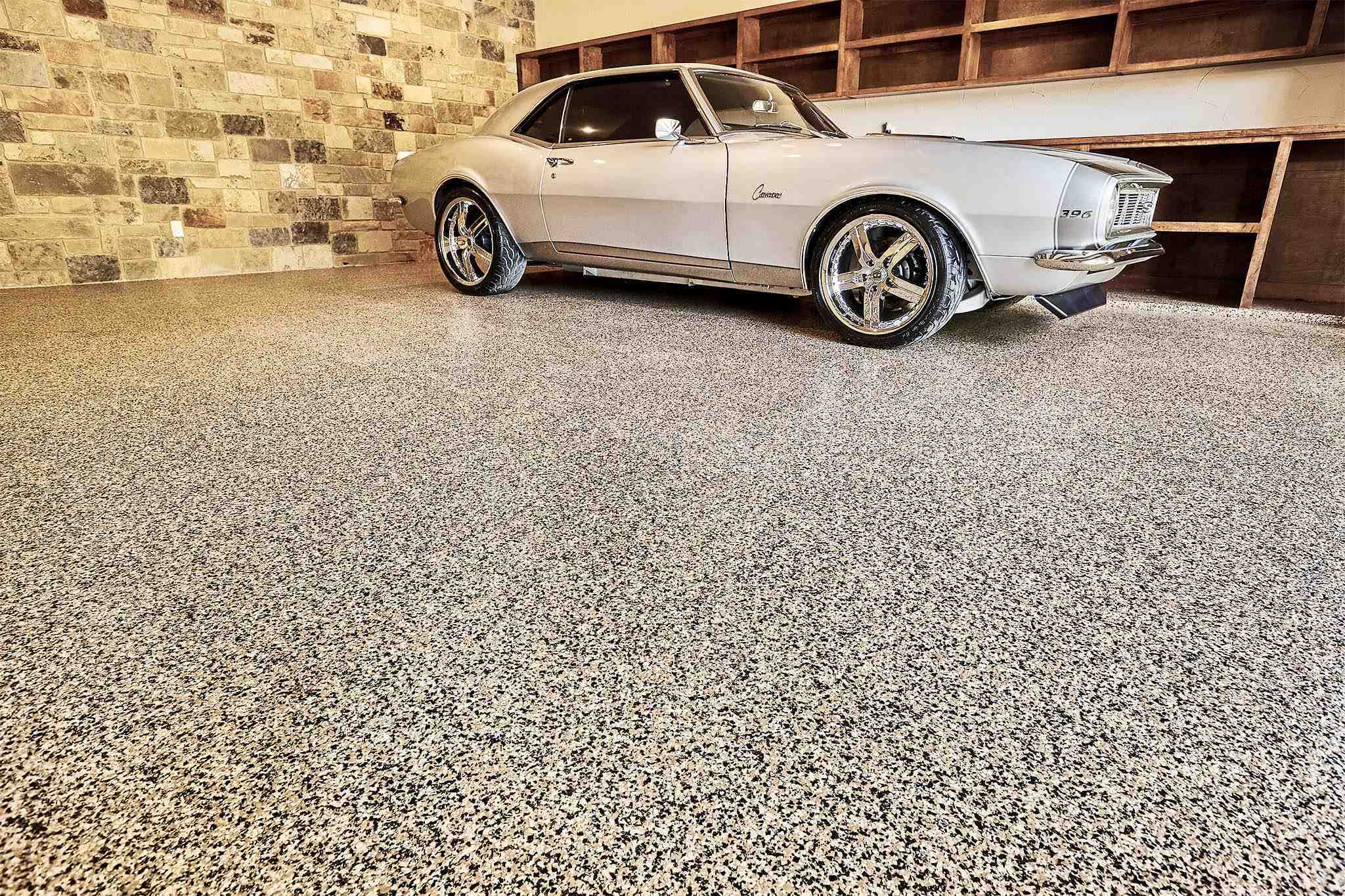
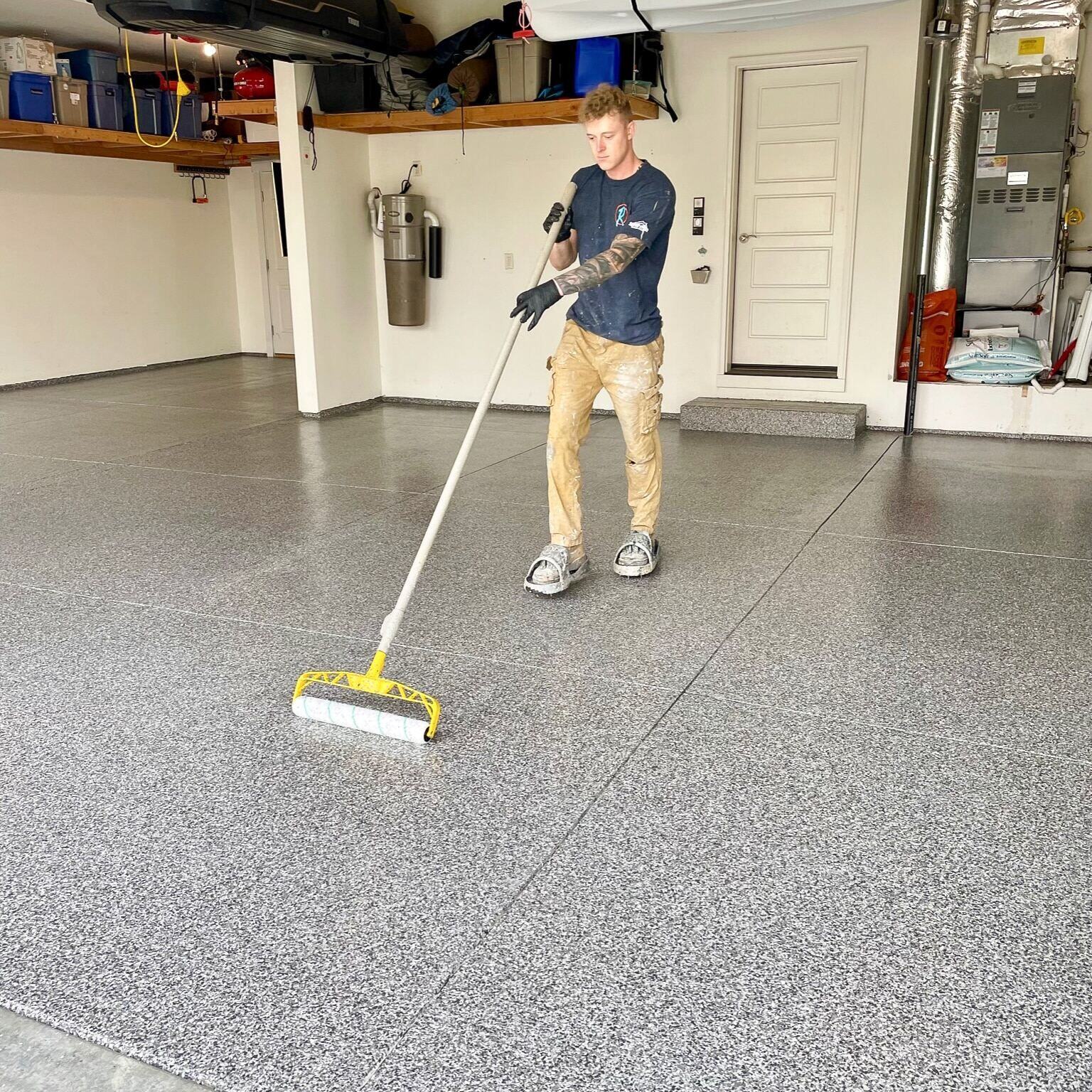
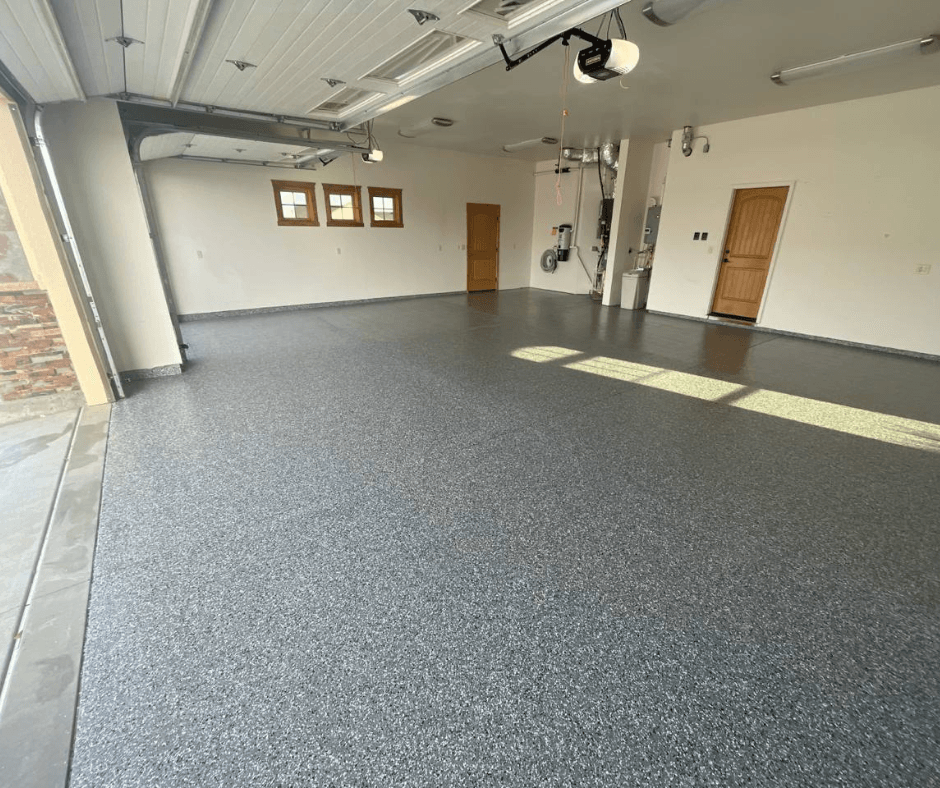

.jpg?width=750&height=1000&name=image001%20(1).jpg)

